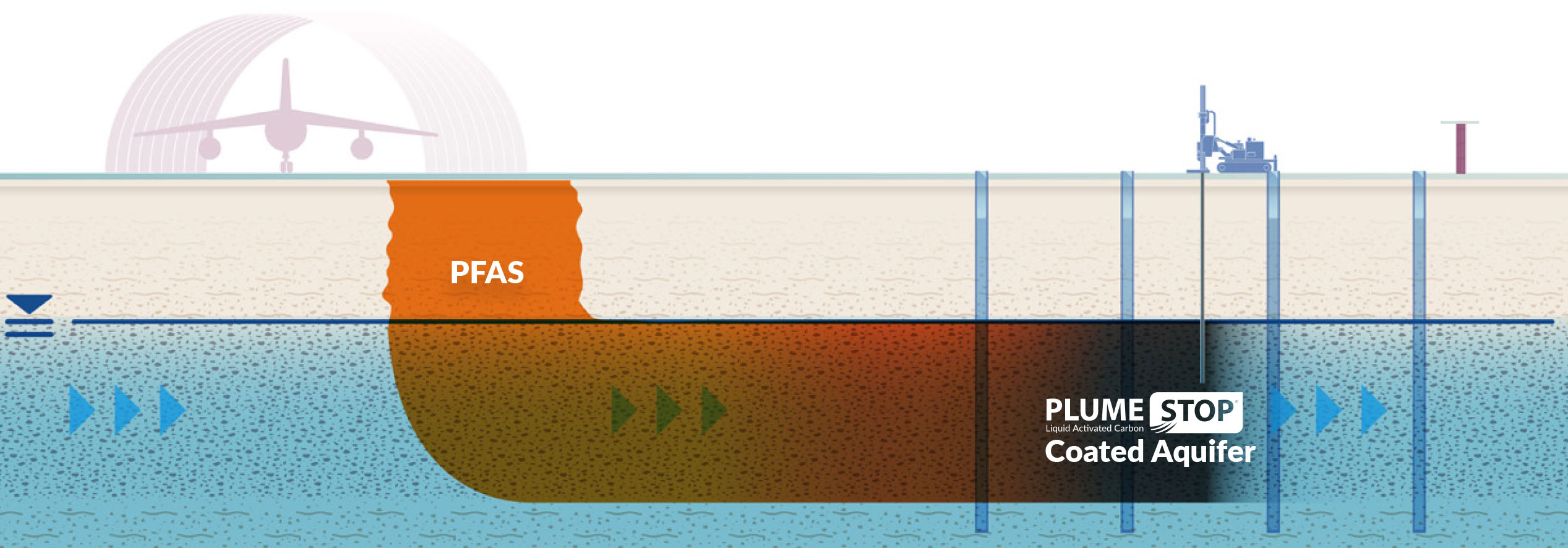Cutting-edge PFAS Treatment Solutions for Safer Water
The raising prevalence of PFAS contamination in water materials requires a critical assessment of cutting-edge therapy services. Furthermore, arising bioremediation strategies offer a more sustainable strategy to tackling PFAS difficulties. pfas management.
Introduction of PFAS Contamination
PFAS contamination has actually become a significant environmental and public health issue. Per- and polyfluoroalkyl compounds (PFAS) are a group of artificial chemicals known for their determination in the setting and body, leading them to be commonly described as "for life chemicals." These substances have actually been widely used in various industries, including firefighting foams, water-repellent textiles, and food product packaging, largely as a result of their water- and grease-resistant buildings.
The prevalent use PFAS has actually caused their discovery in soil, water materials, and even in the blood of human beings and pets. Research studies have linked PFAS exposure to various wellness problems, consisting of developing impacts in infants, immune system disorder, and different forms of cancer cells. Additionally, the environmental persistence of these substances complicates their degradation and elimination, elevating problems regarding lasting environmental impacts.
Regulative bodies are increasingly carrying out rigid standards to keep track of and lower PFAS degrees in drinking water and various other environmental tools. As understanding of PFAS contamination expands, it has ended up being vital for neighborhoods and industries to look for effective therapy services to minimize exposure and safeguard public wellness.
Advanced Purification Technologies
As the seriousness to address PFAS contamination escalates, advanced purification innovations have actually become an essential component in the removal efforts aimed at getting rid of these consistent chemicals from water resources. These technologies take advantage of innovative mechanisms to successfully target and capture PFAS compounds, which are notoriously resistant to standard treatment techniques.
One of the most encouraging approaches is the use of granular turned on carbon (GAC), which adsorbs PFAS molecules because of its high surface location and porous structure. This technique has actually been widely executed in both local and commercial settings, demonstrating substantial reductions in PFAS concentrations. Furthermore, ion exchange materials have actually gained traction, particularly created to uniquely bind PFAS ions from water, thus facilitating their elimination.
Membrane layer filtration innovations, such as reverse osmosis and nanofiltration, likewise reveal efficiency in PFAS elimination by literally dividing contaminants from water - pfas management. These systems can achieve high levels of purity, making them ideal for drinking water applications
Chemical Treatment Advancements
Countless chemical therapy technologies are being discovered to effectively address PFAS contamination in water supplies. One promising method involves the use of advanced oxidation processes (AOPs), which utilize effective oxidants such as ozone, hydrogen peroxide, or chlorine dioxide incorporated with UV light to damage down PFAS compounds right into much less dangerous compounds. This technique has demonstrated efficiency in research laboratory setups, showing potential for scalability in real-world applications.
Another ingenious technique is the development of ion-exchange materials especially created to target PFAS. These resins can selectively adsorb PFAS substances from water, enabling their elimination during therapy procedures. Current improvements have improved the efficiency and ability of these resins, making them a favorable choice for water therapy facilities.
In addition, scientists are checking out making use of chemical representatives like persulfate and ferrous ions to boost the deterioration of PFAS in contaminated water. These representatives can cause chain reaction that promote the malfunction of persistent PFAS substances.
Emerging Bioremediation Strategies
Recent advancements in chemical look at this now therapy developments have actually led the way for exploring bioremediation strategies as a feasible alternative for resolving PFAS contamination. Bioremediation utilizes the natural metabolic procedures of bacteria to weaken or transform toxins, making it an appealing method for taking on consistent impurities like PFAS.
Emerging techniques in bioremediation consist of the usage of genetically engineered bacteria that can especially target and break down PFAS compounds. These microbial pressures are being developed for their improved destruction capabilities, boosting the efficiency of the remediation process. In addition, researchers are examining the possibility of plant-assisted bioremediation, where particular plant this post species may uptake and withdraw PFAS from infected soil and water.
One more promising technique is the application of bioaugmentation, which involves introducing valuable microorganisms into contaminated atmospheres to improve the degradation of PFAS. This technique can promote faster remediation timelines and improve overall effectiveness.

Governing Structures and Requirements
A detailed governing framework is important for efficiently handling PFAS contamination and making sure public health and wellness defense. The raising acknowledgment of per- and polyfluoroalkyl substances (PFAS) as environmental pollutants has prompted various government and state firms to create criteria that regulate their existence in water materials. The United State Epa (EPA) has actually established health advisories and is pursuing establishing enforceable limitations for PFAS in drinking water.
State-level policies vary substantially, with some states taking on stricter guidelines than those suggested by the EPA. These guidelines frequently consist of maximum contaminant degrees (MCLs) for certain PFAS compounds, tracking requirements, and reporting obligations for water energies. Furthermore, emerging structures concentrate on the remediation of infected sites, emphasizing the demand for reliable therapy modern technologies.

Conclusion
To conclude, the advancement and execution of cutting-edge PFAS therapy services are vital for addressing the prevalent problem of water contamination. Advanced filtration modern technologies, chemical treatments, and emerging bioremediation strategies jointly present a multifaceted strategy to successfully reduce and weaken PFAS levels. As regulatory structures continue to evolve, incorporating these technologies will certainly be necessary to secure public wellness and restore the integrity of polluted water sources, inevitably contributing to a cleaner and more secure click here now environment.